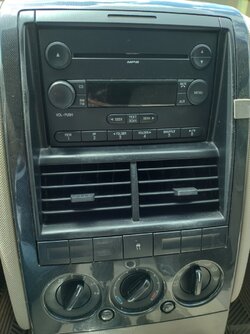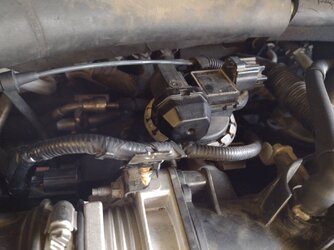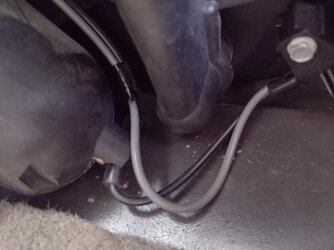Rene44
Member
- Joined
- September 22, 2017
- Messages
- 19
- Reaction score
- 5
- City, State
- Natchez, MS
- Year, Model & Trim Level
- 2007 Ford Explorer XLT
We have been trying to track down this problem for a few weeks now. So any suggestions would be appreciated. When going up a hill and giving it just a bit more juice (from 70 to like 75) it changes from the front/direct vents that cool the driver and the passenger to the defrost vents up by the windshield. Once you get down the hill, then it instantly kicks back in. The very first thing we did was changed the vacuum check valve. Test drove the next day - no dice. Ran a smoke test using the line that goes to the brake booster and it only showed a leak around the throttle body so we tighten up that area yesterday. Went to work today and tested - no dice. So will probably run another smoke test.
We have been trying to find the vacuum reservoir ball that other posts suggest but could not find anything under the passenger fender side after removing all the black pieces. We see a black, football-looking part underneath the passenger footing area but can't get google to pull what that part is. We also see several canister-looking parts and did a unplug and re-plug. One has a metal piece that moves in and out and you turn the ac on and off. Looked at all the lines and don't see cracks or breaks anywhere.
When the air is in, it is nice and crisp. Maybe just not blowing as hard on three as it use to but...
This has got us stumped.
We have been trying to find the vacuum reservoir ball that other posts suggest but could not find anything under the passenger fender side after removing all the black pieces. We see a black, football-looking part underneath the passenger footing area but can't get google to pull what that part is. We also see several canister-looking parts and did a unplug and re-plug. One has a metal piece that moves in and out and you turn the ac on and off. Looked at all the lines and don't see cracks or breaks anywhere.
When the air is in, it is nice and crisp. Maybe just not blowing as hard on three as it use to but...
This has got us stumped.














